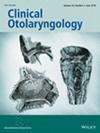Validation and Development Testing of the Symptom Group Assessment Scale for Patients With Sudden Deafness: A Comprehensive Study
Abstract
Background
The objective is to create a symptom assessment scale specifically designed for people experiencing sudden deafness and thereafter evaluate its reliability and validity.
Methods
A literature review and semi-structured interviews were used to create a symptom experience model-based scale item pool. After two rounds of expert deliberation, the first scale was finalised. An initial 30-item survey provided descriptive definitions and reference standards for symptom severity. One hundred sixty patients completed the questionnaire, but 7 patients who did not meet the requirements were excluded, and 153 patients who met the criteria in the otolaryngology department admitted to a tertiary hospital in Zhenjiang City between March 2022 and September 2023 were surveyed to assess the scale's validity and reliability.
Results
The Symptom Group Assessment Scale for Sudden Deafness Patients comprises three dimensions and a total of 13 items. These dimensions include the Ear Symptom Group, consisting of five items, the systemic symptom group, consisting of five items, and the psychosomatic symptom group, consisting of three items. By conducting exploratory factor analysis, we were able to identify three shared components, which accounted for a total of 57.780% of the variance. The confirmatory factor analysis demonstrated that the model exhibited excellent flexibility. The Cronbach's alpha coefficient for the scale is 0.942, indicating a high level of internal consistency.
Conclusion
The validated scale provides clinicians and nurses with a reliable tool to systematically assess symptom burden in sudden deafness patients. Its integration into clinical practice can inform tailored nursing interventions, such as symptom monitoring and psychosocial support, while aiding in the development of individualised management plans. This enhances patient-centred care and contributes to improved clinical outcomes in this population.


 求助内容:
求助内容: 应助结果提醒方式:
应助结果提醒方式:


